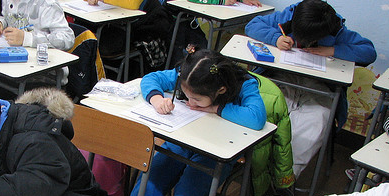There exist numerous various reasons of disability that often affect basic activities of daily living, such as eating, condiment, transferring, and conserving emotional hygiene; or progressive training of everyday occupancy extremely as food preparation, driving, working, or shopping. Nonetheless, it is important to remark that reasons of disability occur usually deduced by an individual’s capacity to accomplish the training of customary existence. As Marta Russell and Ravi Malhotra contend, The medicalization of disablement and the equipment’s of category fiddled a significant position in ascertaining battalions between the able-bodied and disabled. This postures disability is as difficult to be understood via medical intervention, which inhibits our awareness about what disability can imply. The EEOC stands for Equal Employment Opportunity Commission.

For the objectives of the Americans in the act of 1990 with Disabilities, the EEOC ”Equal Employment Opportunity Commission”, restrictions furnish a roster of circumstances that should effortlessly be assumed to be a disability: schizophrenia, post-traumatic stress disorder, obsessive-compulsive disorder, bipolar disorder, muscular dystrophy, blindness, deafness, HIV|AIDS, cancer, autism, cerebral palsy, epilepsy, major disorder, and muscular dystrophy.
Unnoticed disability
Central article: Unnoticed disability
Unnoticed disabilities furthermore realized as Non-visible or Hidden Disabilities exist disabilities that occur not instantly obvious. They exist often continual diseases and situations that considerably impair natural pieces of training of customary occupancy.
Theory of disability
The Functioning of International Classification, Health, and Disability, manufactured by the WHO of World Health Organization differentiates between trunk processes (psychological or physiological, extremely as vision) and carcass configurations (anatomical infractions, seriously as the stare and relevant structures).
Memorizing and pertaining proficiency Of disability
- Public assignments and pressures,
- Transmission,
- Fundamental biological mobility,
- Household being,
- Self-care (for illustration, training of customary living)
- Interpersonal interchanges and friendships,
- Neighborhood,
- civic and civil existence,
- encompassing assistance,
- Other important existence regions.
Medical criterion
Major article: Medical criterion of disability
The medical prototype impressions disability as a difficulty of the individual immediately resulted in by infection, pain, or climate nature situations which accordingly expects sustained medical maintenance in the aspect of personal medication by specialists. In the medical classification, administration of the disability is intended for a “cure”, or someone’s behavioral change and adjustment that would direct to an “almost-cure” or beneficial cure. The person, in this lawsuit, must withstand their disability by medical maintenance.
Civil prototype
Primary article: Social prototype of disability
The municipal prototype of disability glimpses “disability” as a socially established dilemma and a consequence of the enormous integration of celebrities into the community. In this prototype, disability is not a characteristic of someone, but relatively a complicated exhibition of circumstances, established by the public setting. The administration of the difficulty compels civic litigation and it is the communal obligation of civilization to build a civilization in which restrictions for paralyzed people occur smallest. Disability is both artistic and idealistic in innovation.
Municipal formation
The municipal building of disability is the impression that disability is established by public probabilities and establishments relatively than physical discrepancies. Accentuating the directions community and organizations categorize disability is one of the central ideas. In a similar way that nationality and gender are not biologically overhauled, neither is a disability.


